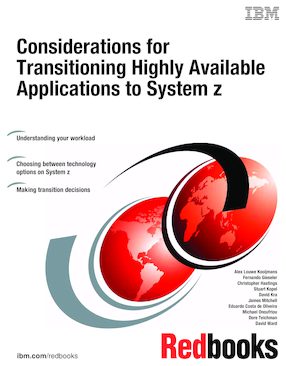
Published on 30 September 2011, updated 14 October 2011
Share this page:
ISBN-10: 0738435856
ISBN-13: 9780738435855
IBM Form #: SG24-7824-00
Authors: Alex Louwe Kooijmans, Fernando Gieseler, Christopher Hastings, Stuart Kopel, David Kra, James Mitchell, Eduardo Costa de Oliveira, Michael Onoufriou, Dore Teichman and David Ward
Abstract
You may have several triggers to investigate the feasibility of moving a workload or set of workloads to the IBM® System z® platform. These triggers could be concerns about operational cost, manageability, or delivering the agreed service levels, among others.
Investigating the feasibility of a possible migration or transition to any other platform, including System z, requires a number of basic steps. These steps usually start with an understanding of the current workload and its pain points, and end with a business case to move the workload. It is important to find out how easy a migration is going to be and how much risk will be involved.
In this IBM Redbooks® publication we offer thoughts on how to move through these steps. We also include a chapter with a System z technology summary to help you understand how a migrated workload may fit on the platform.
Our focus in this book is on workloads that are mission-critical and require a high level of availability, including disaster recovery.
Table of Contents
Chapter 1. Management summary
Chapter 2. Introduction to systems availability
Chapter 3. Target architectures for availability
Chapter 4. System z technology options
Chapter 5. Operational models for high availability
Chapter 6. Workload assessment
Chapter 7. Transition approaches
Chapter 8. System z capacity planning, sizing, and TCO